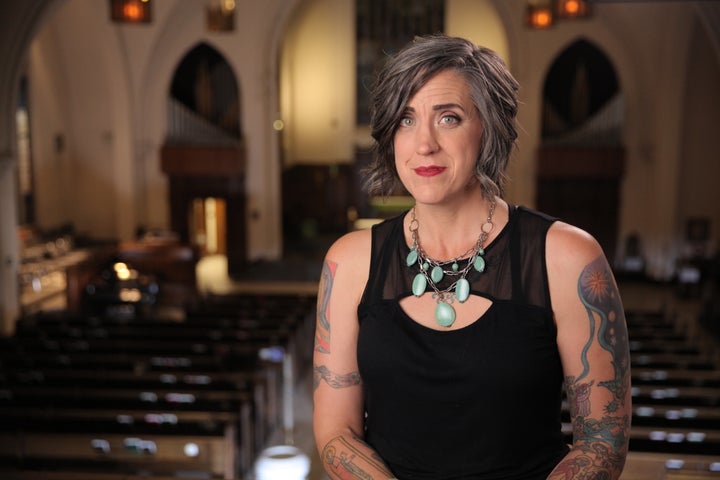[Huffington Post] What should Christian feminists do with their old “purity” rings, symbols of a patriarchal theology that has harmed countless women?
Melt them down, says progressive Christian author and theologian Nadia Bolz-Weber, and create something completely new.
On Monday, Bolz-Weber issued a call on Twitter for people to send her those rings “for a massive art project.”
In certain evangelical Christian circles, the rings were given to young girls as symbols of a pledge they made to abstain from sex until marriage. But the rings ― and more broadly, the Christian purity culture of the 1990s and 2000s ― also shamed young girls into disconnecting from their bodies, Bolz-Weber argues.
With the help of artist Nancy Anderson, Bolz-Weber said she plans to melt down the rings that people send her and recast them as a “golden vagina.” She said that the project ― part of a promotion for Shameless, her upcoming book about sex and Christianity ― is about “reclamation” of women’s bodies.
“This thing about women that the church has tried to hide and control and that is a canvas on which other people can write their own righteousness ― it’s actually ours,” Bolz-Weber told HuffPost. “This part of me is mine and I get to determine what is good for it and if it’s beautiful and how I use it in the world.”

Bolz-Weber was the founding pastor of Denver’s House for All Sinners and Saints, a progressive, queer-inclusive Lutheran congregation. Although she was born a generation too early to experience the purity ring phenomenon, she said that many of her younger friends and former parishioners were immersed in that culture.
Notions about the need to control women’s sexuality have existed for centuries in Christian communities, but the purity culture phenomenon that Bolz-Weber is referring really took root in certain evangelical circles during the 1990s and 2000s. It grew out of the alarm that some conservative Christians felt about the sexual revolution, according to Linda Kay Klein, author of Pure: Inside the Evangelical Movement That Shamed a Generation of Young Women and How I Broke Free.
Some Christians believed that a renewed focus on chastity and traditional sexual values was the best solution to the spread of AIDS and other sexually transmitted infections, Klein writes in her book. The U.S. government, influenced by this belief, began pouring money into abstinence-only education. This helped the purity movement spread beyond the most insular circles and into more mainstream evangelicalism.
To continue reading, click here.
Pulpit & Pen first wrote about Bolz-Weber’s suggestion of creating such a statue in February of this year when she initially made the suggestion. Now, she’s going to actually do it.
[Editor’s Note: It reminds me of Exodus 32:20]











